Related Research Articles
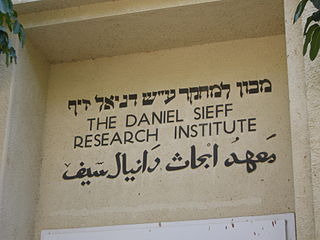
The Weizmann Institute of Science is a public research university in Rehovot, Israel, established in 1934, 14 years before the State of Israel. It differs from other Israeli universities in that it offers only postgraduate degrees in the natural and exact sciences.

Steven Weldon Squyres is an American astronomer and planetary scientist. He was the James A. Weeks Professor of Physical Sciences at Cornell University in Ithaca, New York. His research area is in planetary sciences, with a focus on large solid bodies in the Solar System such as the terrestrial planets and the moons of the Jovian planets. Squyres was the principal investigator of the Mars Exploration Rover Mission (MER).
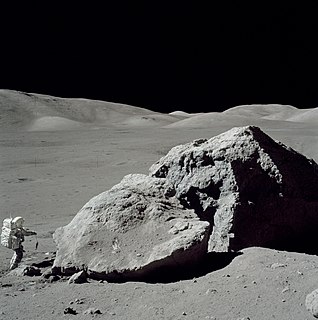
Planetary geology, alternatively known as astrogeology or exogeology, is a planetary science discipline concerned with the geology of the celestial bodies such as the planets and their moons, asteroids, comets, and meteorites. Although the geo- prefix typically indicates topics of or relating to Earth, planetary geology is named as such for historical and convenience reasons; due to the types of investigations involved, it is closely linked with Earth-based geology. These investigations are centered around the composition, structure, processes, and history of a planet.

Charles Elachi is a Lebanese-American professor (emeritus) of electrical engineering and planetary science at the California Institute of Technology (Caltech). From 2001 to 2016 he was the 8th director of the Jet Propulsion Laboratory and vice president of Caltech.

Pascal Lee is co-founder and chairman of the Mars Institute, a planetary scientist at the SETI Institute, and the Principal Investigator of the Haughton-Mars Project (HMP) at NASA Ames Research Center in Mountain View, California. He holds an ME in geology and geophysics from the University of Paris, and a PhD in astronomy and space sciences from Cornell University.

Oded Goldreich is a professor of Computer Science at the Faculty of Mathematics and Computer Science of Weizmann Institute of Science, Israel. His research interests lie within the theory of computation and are, specifically, the interplay of randomness and computation, the foundations of cryptography, and computational complexity theory. He won the Knuth Prize in 2017 and was selected in 2021 to receive the Israel Prize in mathematics.
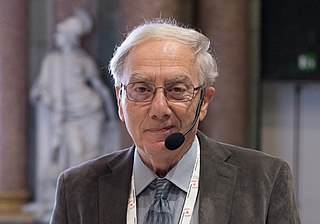
Mario Livio is an Israeli-American astrophysicist and an author of works that popularize science and mathematics. For 24 years (1991-2015) he was an astrophysicist at the Space Telescope Science Institute, which operates the Hubble Space Telescope. He has published more than 400 scientific articles on topics including cosmology, supernova explosions, black holes, extrasolar planets, and the emergence of life in the universe. His book on the irrational number phi, The Golden Ratio: The Story of Phi, the World's Most Astonishing Number (2002), won the Peano Prize and the International Pythagoras Prize for popular books on mathematics.

Peter Goldreich is an American astrophysicist whose research focuses on celestial mechanics, planetary rings, helioseismology and neutron stars. He is the Lee DuBridge Professor of Astrophysics and Planetary Physics at California Institute of Technology. Since 2005 he has also been a professor at the Institute for Advanced Study in Princeton, New Jersey. Asteroid 3805 Goldreich is named after him.

Eberswalde, formerly known as Holden NE, is a partially buried impact crater in Margaritifer Terra, Mars. Eberswalde crater lies just to the north of Holden, a large crater that may have been a lake. The 65.3-km-diameter crater, centered at 24°S, 33°W, is named after the German town of the same name, in accordance with the International Astronomical Union's rules for planetary nomenclature. It was one of the final four proposed landing sites for the Mars rover Mars Science Laboratory mission. This extraterrestrial geological feature lies situated within the Margaritifer Sinus quadrangle (MC-19) region of Mars. Although not chosen, it was considered a potential landing site for the Mars 2020 Perseverance rover, and in the second Mars 2020 Landing Site Workshop it survived the cut and was among the top eight sites still in the running.

James F. Bell III is a Professor of Astronomy at Arizona State University, specializing in the study of planetary geology, geochemistry and mineralogy using data obtained from telescopes and from various spacecraft missions. Dr. Bell's active research has involved the NASA Mars Pathfinder, Near Earth Asteroid Rendezvous (NEAR), Comet Nucleus Tour (CONTOUR), 2001 Mars Odyssey, Mars Reconnaissance Orbiter, Lunar Reconnaissance Orbiter, and the Mars Science Laboratory missions. His book Postcards from Mars includes many images taken by the Mars rovers. Dr. Bell is currently an editor of the space science journal Icarus and president of The Planetary Society. He has served as the lead scientist in charge of the Panoramic camera (Pancam) color imaging system on Mars rovers Spirit and Opportunity.
Jonathan I. Lunine is an American planetary scientist and physicist. Lunine teaches at Cornell University, where he is the David C. Duncan Professor in the Physical Sciences and Chair of the Department of Astronomy. Having published more than 380 research papers, Lunine is at the forefront of research into planet formation, evolution, and habitability. His work includes analysis of brown dwarfs, gas giants, and planetary satellites. Within the Solar System, bodies with potential organic chemistry and prebiotic conditions, particularly Saturn's moon Titan, have been the focus of Lunine's research.
Ben-Aharon is a patronymic surname most commonly found in Israel, originating from "Aaron" of the Old Testament, and meaning "son of mountaineer". There are several patronym surname variants including "Aharonson", "Aaronson", and "Aaronsohn". Aharon is a Hebrew masculine given name common in Israel. Notable people with the surname Ben-Aharon include:

Louis Dill Friedman is an American astronautics engineer and space spokesperson. He was born in New York and raised in the Bronx. Dr. Friedman was a co-founder of The Planetary Society with Carl Sagan and Bruce C. Murray.

Sean Carl Solomon is the director of the Lamont–Doherty Earth Observatory of Columbia University, where he is also the William B. Ransford Professor of Earth and Planetary Science. Before moving to Columbia in 2012, he was the director of the Department of Terrestrial Magnetism at the Carnegie Institute in Washington, D.C. His research area is in geophysics, including the fields of planetary geology, seismology, marine geophysics, and geodynamics. Solomon is the principal investigator on the NASA MESSENGER mission to Mercury. He is also a team member on the Gravity Recovery and Interior Laboratory mission and the Plume-Lithosphere Undersea Melt Experiment (PLUME).
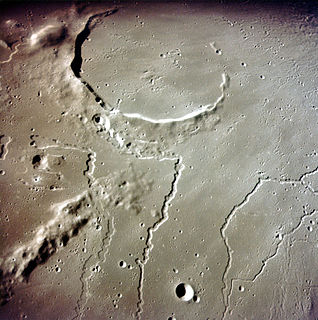
Planetary science is the scientific study of planets, celestial bodies and planetary systems and the processes of their formation. It studies objects ranging in size from micrometeoroids to gas giants, aiming to determine their composition, dynamics, formation, interrelations and history. It is a strongly interdisciplinary field, which originally grew from astronomy and earth science, and now incorporates many disciplines, including planetary geology, cosmochemistry, atmospheric science, oceanography, hydrology, theoretical planetary science, glaciology, and exoplanetology. Allied disciplines include space physics, when concerned with the effects of the Sun on the bodies of the Solar System, and astrobiology.

Andrew Perry Ingersoll is a professor of planetary science at the California Institute of Technology. Ingersoll was elected to the American Academy of Arts and Sciences in 1997. He received the lifetime achievement award in planetary science, the Gerard P. Kuiper Prize, in 2007. He proposed the runaway greenhouse effect and is known for his research on planetary atmospheres and climate.
Catherine L. Johnson is a planetary scientist known for her research on the magnetic fields of planets including Mercury, Venus, Earth and its moon, and Mars.

Abraham Zangen is an Israeli professor of neuroscience, head of the brain stimulation and behavior lab and chair of the psychobiology brain program at Ben-Gurion University of the Negev (BGU).

Ravit Helled Ita is an Israeli planetary scientist and a professor in the department of astrophysics and cosmology at the University of Zürich. She studies gas giant planets in the Solar System and exoplanets.
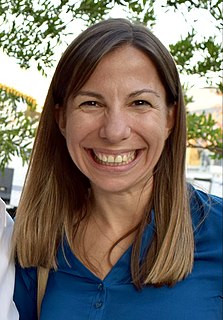
Margarita Marinova is a Bulgarian aeronautical engineer. She is the Senior Mars and Vehicle Systems Development Engineer at SpaceX.
References
- ↑ "Dr Oded Aharonson". Planetary Science Institute. Archived from the original on 15 March 2015. Retrieved 12 March 2015.